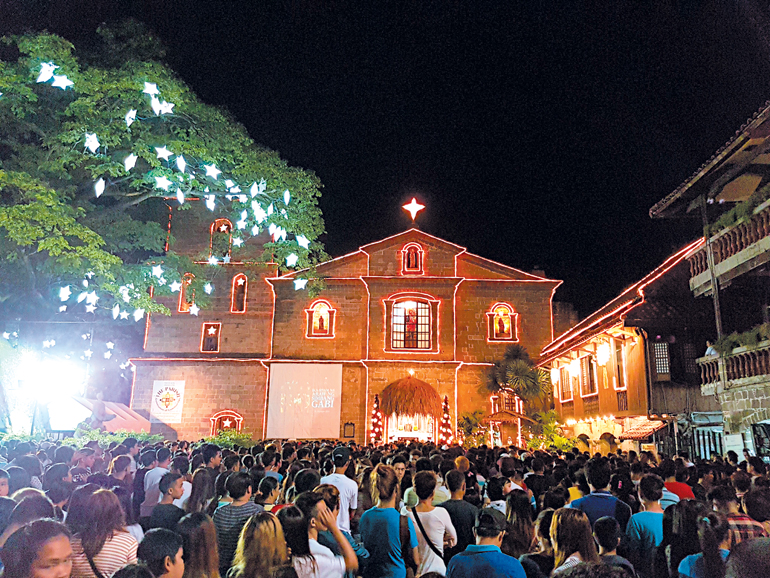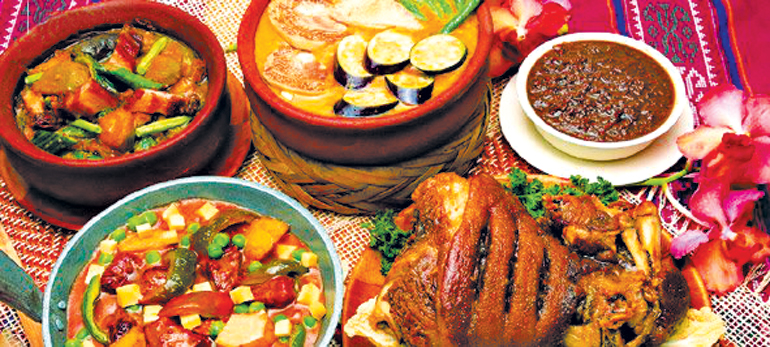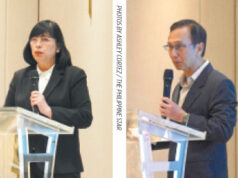Celebrating Christmas season the Filipino way

December marks the year’s end and a time for holidays and festivities. Dazzling decorations are up; Christmas carols are often on replay; and streets and neighborhoods are filled with colorful lights. Globally, celebrating Christmas differs in each country; and in the Philippines, people have more unique ways of celebrating the holiday.
Unlike other countries, a Filipino Christmas is quite lengthy; and the Christmas season here is known to be the longest Christmas season in the world. Filipinos are starting to decorate and light up their surroundings, play popular Christmas songs, and planning for festivities as early as September.
Christmas is a festive time when loved ones come together. The season is a reminder of the love and strong bond that ties families for a long time. Many families travel a long way to celebrate the holiday to reunite with families and friends over delicious meals and fun stories that fill homes with laughter and joy.
Season of feasting

For many Filipino households, Christmas is not complete without the food. Most Filipinos start celebrating Christmas at midnight with the traditional Filipino Christmas feast of Noche Buena. The most common dishes served at Noche Buena include lechon, spaghetti, hamon, fruit salad, and queso de bola; albeit the options nowadays are endless.
For sweet treats, there are rice cakes such as bibingka — a traditional soft and sweet rice cake that is baked in clay pots or leaves and paired with egg, cheese, or unsweetened coconut shreds as a topping; and puto bumbong, purple-steamed rice cakes cooked in bamboo tubes.
Season of giving
Christmas is also known as the season of giving. In addition to exchanging well-thought gifts, there is another means of giving that puts a twist to the usual gift-giving. “Monito Monita” is usually done among family, friends, schoolmates, or workmates. In the gift exchange, before giving the gift straightforwardly, you must describe the person. A further twist to this giving is where participants give something related to a given theme, such as “something cute,” “something heavy,” etc.
While unwrapping gifts is great, there’s nothing as exciting as opening a red envelope with money inside, which is called ang pao, often given by godparents (ninong or ninang) to their godchildren (inaanak).
Accentuating with decorations

Enchanting decorations also make Christmas in the Philippines more unique, from blinking colorful lights, our very own parol, and other unique fixtures.
One of the most popular Christmas decorations in the country is our own version of the Christmas lantern, the parol, which comes in a large circle with a star in the center. Today, parols are hung everywhere — on lampposts, houses, malls and offices, shining bright at night. It also comes in a variety of shapes, sizes, designs, patterns, and materials.
Also, parols are admired because of their unique designs that leave people mesmerized every time they see them. Parols have always been a part of Filipino Christmas celebrations and they are always a part of every feast and parade across the country. Aside from being a decoration, parols are also considered a beacon of hope, a symbol of the vibrant Christmas culture and of hard work.
Belen, or the nativity scene, is another symbol unique to the Filipino Christmas celebration, which is a combination of different materials and can be seen in churches, homes, schools and office buildings. It is a three-dimensional art representing the birth of Jesus Christ: the baby Jesus in a manger, surrounded by the Virgin Mary, St. Joseph, the shepherds, their flock, the Three Kings and some animals and angels. Derived from the Spanish name for Bethlehem, the birthplace of Jesus Christ, the belen was introduced in the Philippines by the Spanish Franciscans during the colonial period.
Christmas trees are also a common fixture in homes and offices; and in the Philippines, these trees are more than evergreens, and they differ in size, color, and design.
Strings of blinking tivoli lights, snowflake ornaments, and Santa Claus with his reindeer are also some of the decorations that bring joy and comfort on the streets or at home.
Season of gathering
Christmas carols have been a tradition worldwide, but Filipinos are found to do caroling differently. Singing carols from house to house, the way it was done in the country, has a little twist and more humor. In addition to the traditional caroling with costumes or lyric books, Filipinos use recycled instruments and made-up lyrics.
Another tradition that lives on in the Philippines is celebrating mass during Christmas. There are many religious practices that Filipinos observe during the season. For instance, they attend the night mass (Simbang Gabi), where they spend the nine days leading up to Christmas attending mass early in the morning or late at night. There is a belief that when people finish the nine days, they can be granted a wish.
On Christmas Eve, they also attend the Christmas mass or the Misa de Gallo, a celebration involving the lighting of candles, projecting displays, or sometimes the reenactment of the birth story of baby Jesus.
This year, there are several performances available for public viewing that embody the genuine essence of the Filipino Christmas tradition. These shows include the first all-Filipino Christmas ballet Puso ng Pasko, performed by the artists of Alice Reyes Dance Philippines and the Cultural Center of the Philippines’ Professional Artist Support Program. The performance was premiered at the Metropolitan Theater in Manila last Dec. 1 and 2, and there will be a free public tour across Luzon, with stops at Pampanga, Tarlac, Nueva Ecija, Makati City, and the Malacañan Palace.
Stronger relationships, physically and virtually
In recent years, Filipinos celebrated Christmas differently. Due to the coronavirus pandemic, the holiday celebration was more restricted; but that was not a hindrance for still celebrating the season with each other. Many families used digital platforms to communicate with their loved ones; buying and sending gifts are made online; and gatherings are held through videoconferences.
Now, as the world returns to a new normal, Christmas celebrations are gradually returning to how they used to be. There are more people flocking to malls for shopping, gathering in churches for worship and reflection, and families will surely reconnect over a rich feast of sumptuous food and drinks, celebrating the fruits of hard work done for almost a year.
Whether it is celebrated physically or virtually, the season is about a celebration of love, the joy of giving, sharing blessings, and spending time and creating memories with loved ones — this is the true essence of Filipino Christmas. — Angela Kiara S. Brillantes



